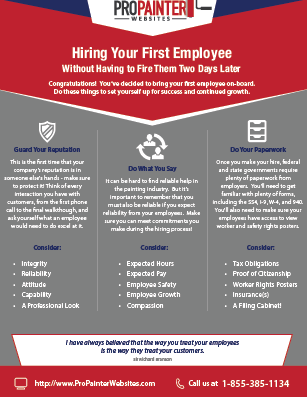The Efficiency Of Your Commercial External Painting Task Is Carefully Linked To Weather-- Learn How It Can Either Support Or Impede Your Desired Results
The Efficiency Of Your Commercial External Painting Task Is Carefully Linked To Weather-- Learn How It Can Either Support Or Impede Your Desired Results
Blog Article
Developed By-Fabricius Turan
When you're intending an industrial external paint task, do not take too lightly the impact of weather on your outcomes. You need to think about factors like temperature level, humidity, and rainfall, as they can make or break your paint work. For instance, did you know that excellent conditions ask for particular temperature arrays and moisture degrees? Failing to painting portland can bring about irregular coatings or even damages to fresh paint. Recognizing these components is essential to attaining a lasting, specialist result. So, what specific weather conditions should you be wary of?
Temperature level Considerations
When it comes to industrial external paint, temperature level plays a vital function in the outcome of your project. If you're painting in extreme heat, the paint can dry out also promptly, causing problems like inadequate attachment and unequal coatings. You want to aim for temperature levels between 50 ° F and 85 ° F for the very best outcomes. Listed below exterior painters , paint might not heal appropriately, while over 85 ° F, you take the chance of blistering and breaking.
Timing your job with the right temperatures is important. Beginning your job early in the early morning or later on in the afternoon when it's cooler, particularly during warm months.
Also, think about the surface temperature; it can be considerably higher than the air temperature, especially on sunny days. Make use of a surface area thermometer to check this prior to you begin.
If temperature levels are unforeseeable, keep an eye on the weather prediction. Sudden temperature level declines or heat waves can hinder your plans. You don't intend to start painting just to have the problems alter mid-project.
Humidity Levels
Humidity levels substantially affect the success of your commercial external paint job. When the humidity is too expensive, it can hinder paint drying out and healing, leading to a series of issues like poor attachment and complete quality.
If you're intending a task throughout damp conditions, you may find that the paint takes longer to dry, which can expand your project timeline and increase expenses.
Conversely, low humidity can also posture obstacles. Paint may dry also rapidly, protecting against correct application and leading to an irregular finish.
You'll want to monitor the moisture degrees closely to guarantee you're functioning within the suitable variety, usually between 40% and 70%.
To get the best results, consider making use of a hygrometer to gauge humidity before starting your job.
If you locate the levels are outside the optimum array, you might require to readjust your schedule or select paints created for variable problems.
Constantly seek advice from the manufacturer's standards for particular recommendations on humidity tolerance.
Precipitation Impact
Rainfall or snow can dramatically interrupt your business outside painting strategies. When precipitation occurs, it can get rid of newly used paint or create an uneven coating. Ideally, you want to pick days with dry weather to guarantee the paint sticks properly and treatments effectively. If you're caught in a rain shower, it's best to stop the task and wait on problems to boost.
In addition, snow can be a lot more damaging. Not only does it create a damp surface, however it can also lower temperature levels, making it difficult for paint to completely dry. This can result in concerns like peeling off or blistering down the line.
It's critical to check the weather forecast before starting your job. If rainfall or snow is predicted, take into consideration rescheduling.
Always remember to enable ample drying out time in between layers, particularly if the climate stays uncertain.
Conclusion
In conclusion, keeping an eye on the weather condition is vital for a successful commercial outside paint job. By checking temperature level, humidity, and rainfall, you can make certain the best problems for application and treating. Keep in mind to prepare your job around desirable climate and always comply with manufacturer guidelines. With the right strategy, you'll achieve a long-lasting, gorgeous finish that can endure the elements. Don't allow the weather capture you off guard-- remain educated and paint smart!
